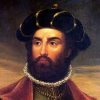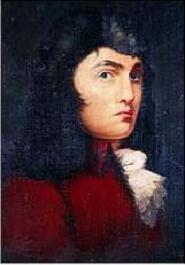Founding father for Charcoal. There are no famous colliers but iron works really increased demand for charcoal. The first attempt in 1621 to build iron works in Virginia Colony failed after the imported workers were killed by the natives. The first ironworks was established in massachusetts by winthrop the younger (failure as a manager but sucessful in financing). All the famous ironmasters in American history such as Rober Leader, Marcus Bird, Thomas Lamb etc have no portraits except one. Ethan Allen helped establish the first blast furnance in Salisbury Connecticutt. That site produced 80% of the cannons manufactured in the americas used during the revolutionary war. However Ethan Allen has other claims to fame.
So I suggest
JOHN WINTHROP THE YOUNGER (February 12, 1606 – April 6, 1676)
The primary fuel for american iron works was charocoal produced by colliers. A blast furnance would require thousands acres of woodland to supply the tons of charocoal needed. This was a dirty business and considered a low profession. By early 1700's, England began migrating to using coal and coke to fuel their furnances which a new type of furnance was developed by Abraham Darcy in 1709. However in American colonies with their abundent virgin forests, iron smelting using charcoal continued until the 1820's.
John Winthrop the Younger believed that because the colonies had a cheap and abundant supply of raw materials, an iron works in Massachusetts could produce goods that could be sold profitably in the American colonies as well as in England itself. In 1641, Winthrop sailed to England to get the capital to fund the enterprise. The Company of Undertakers for the Iron Workes in New England was founded to finance the project with WInthrop as the first manager. In 1645, Winthrop secured the Undertakers an exemption from taxes and a 21-year monopoly on iron production from the
Massachusetts General Court. The first site established in 1645, The Braintree Iron Works, however, was unsuccessful due to a lack of iron ore in the area and an inadequate supply of water to power the machinery.
In 1645, the Undertakers wrote to Winthrop informing him that
Richard Leader, a merchant from
Salehurst who was familiar with the iron making process, would replace him as manager. Leader reviewed the previous site survey and selected a location in
Lynn, Massachusetts (now part of present-day Saugus) on the
Saugus River. The river was navigable for shallow draft vessels and could be dammed to power machinery. The surrounding forests could be used to make charcoal. Bog ore could be mined from nearby ponds, swamps, riverbeds, and bogs. Limestone, which was normally used for
flux, was not available, but through trial and error it was found that gabbro, which could be mined in nearby
Nahant, would work as a flux. The new iron works, which was called Hammersmith, began operations in 1646. It consisted of a
blast furnace for producing
pig iron and
gray iron (the later of which was poured into molds to make
firebacks, pots, pans, kettles, and skillets), a forge where pig iron was refined into
wrought iron and a 500-pound hammer was used to make merchant bars, which were sold to blacksmiths for manufacture into finished products, and a rolling and slitting mill where flat stock that could be used to manufacture nails, bolts, horse shoes, wagon tires, axes, saw blades, and other implements was produced. At the time, it was one of the most technologically advanced iron works in the world. Once functioning, the Iron Works ran for thirty weeks of the year and produced one ton of
cast iron a day.The Saugus iron works was never profitable and closed in 1679, but established the supply requirements for an American iron works to suceed having local source of charcoal, iron ore, limestone, power and cheap transportation. Famous 18th century ironworks include Salisbury iron works in north west Connecticutt, and Valley Forge and Hopewell furnances in Pennsylvania.












